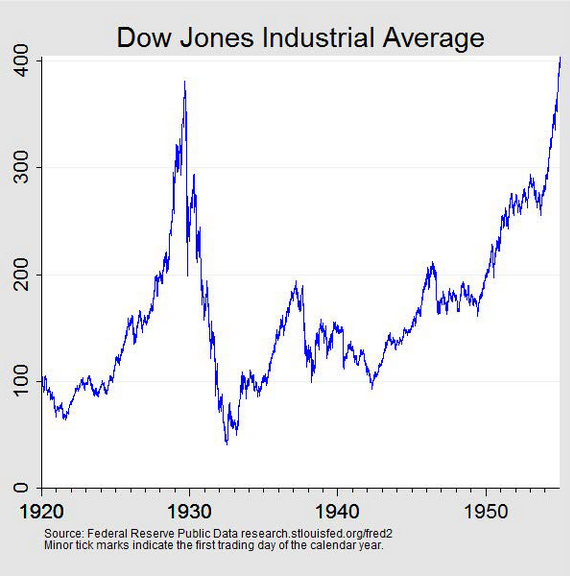Introduction
The 1930s were characterized by a global economic crisis that is known as the Great Depression. It is generally thought to have begun in 1929, with the dates Black Thursday and Black Tuesday, which mean October 24 and 29 of that year, respectively, standing out. Market stocks crashed significantly on those dates, starting a long downward trend that would last until the introduction of the New Deal by President Roosevelt in 1932. As such, historians and economists devote considerable research to these dates to better understand the causes, mechanisms, and effects of market crashes. However, there is still no consensus on the specific events that took place before the crash and during the week that signaled the Great Depression’s beginning. This paper will explore current views on the causes of the crash, its mechanisms, and the resulting crisis.
Prior Events
In the 1920s, the economy of the United States grew rapidly in a pattern that is nowadays thought to be a boom. Sebree and Ruggiero describe the stock market as rapidly growing, full of opportunity for an investor, and lacking a system of controls (p. 13). Share prices kept rising, and the Dow Jones Industrial Average reached several times its prior value (fig. 1). There was no outward indication that this trend would stop, and people kept investing and creating new ways to invest, such as brokers who would lend people speculative money. However, the economy was developing numerous significant issues beneath the surface, creating anxiety among stockholders. Overproduction and underconsumption are among the most prominently cited causes, but there are many other factors (Sebree and Ruggiero, p. 14). As a result, the combination of a variety of factors led to an unexpected market crash and an enduring economic downturn.
The Crash
The economy kept growing until September 1929, as its participants retained sufficient confidence to continue participating in the process. The reason why October was the time when the crash occurred is still a matter of debate among various scholars. Beaudreau suggests that the ongoing electrification of the United States was a principal cause alongside government manipulation of various critical tariffs that correlated with both Black Thursday and Black Tuesday (pp. 70-71). Under this interpretation, electrification led to excessive production on the part of the manufacturers. As such, the government’s failure to curb it caused many of the other problems that ultimately led to the crash once its inability to deal with the fundamental issue became apparent. Ultimately, regardless of the specific reasons for the crash, investor confidence fell at the end of October, settling into a steady downward pattern afterward.
24 October was the date when the stock market first showed a significant downturn, losing substantial amounts of value. Market panic started to emerge, though the closure of the stock market for the weekend slowed it down somewhat. Regardless, Monday showed a significant loss, and 29 October, or Black Tuesday, set a record market loss of $14 billion (Dieterle, p. 452). As such, while Black Tuesday may be the name most commonly associated with the 1929 market crash, it does not represent the beginning of the crisis but rather its most prominent point. Additionally, the event did not cause the Great Depression but served as an expression of its symptoms and the point at which they intensified, leading to the swift economic collapse of the U.S.

The Aftermath
The stock market kept declining, as regulators struggled to develop a coherent and effective response to the issues facing the nation. Wells discusses indecision in the Federal Reserve, as it had to consider purchasing massive amounts of securities and contend with other bodies such as the Open Market Policy Conference (p. 48). Ultimately, the crisis would continue for a decade before an effective policy for opposing it could be developed. The decline ended in summer 1932, with the Dow at 11% of its former peak, and it took the nation until 1954 to return to that figure (Richardson et al.). Overall, the crisis showed the inability of governing bodies at the time to protect the economy and led them to create a policy that would prevent a repeated incident in the future.
Conclusion
The market crash of 1929 represents the beginning of the intensive phase of the Great Depression rather than its precursor. It is the result of a decade of careless and speculative investment that was associated with many side factors, with electrification and overproduction despite underconsumption being among the most prominent. These issues became particularly prominent in October of 1929, possibly due to the failure of government tariff policy aimed to counteract this overexpansion of manufacturing. As a result, two waves of market crashes happened, setting up a more sustained decline for the next three years. The government’s response to the problem was weak due to a lack of coordination and the immense resources it required to succeed. However, the following administration managed to start a recovery, and regulatory agencies learned how to prevent crises of this nature.
Works Cited
Beaudreau, Bernard C. “Electrification, the Smoot-Hawley Tariff Bill and the Stock Market Boom and Crash of 1929: Evidence from Longitudinal Data.” The Stock Market Boom and Crash of 1929 Was Not a Bubble: A Book of Readings, edited by Bernard C. Beaudreau, Cambridge Scholars Publishing, 2019, pp. 69-92.
Dieterle, David A., editor. Economics: The Definitive Encyclopedia from Theory to Practice. Vol. 1, ABC-CLIO, 2017.
Richardson, Gary, et al. “Stock Market Crash of 1929.” Federal Reserve History, 2013.
Sebree, Chet’la, and Adriane Ruggiero. Historical Sources on the Great Depression. Cavendish Square Publishing, 2018.
Wells, Donald R. The Federal Reserve System: A History. McFarland & Company, 2017.